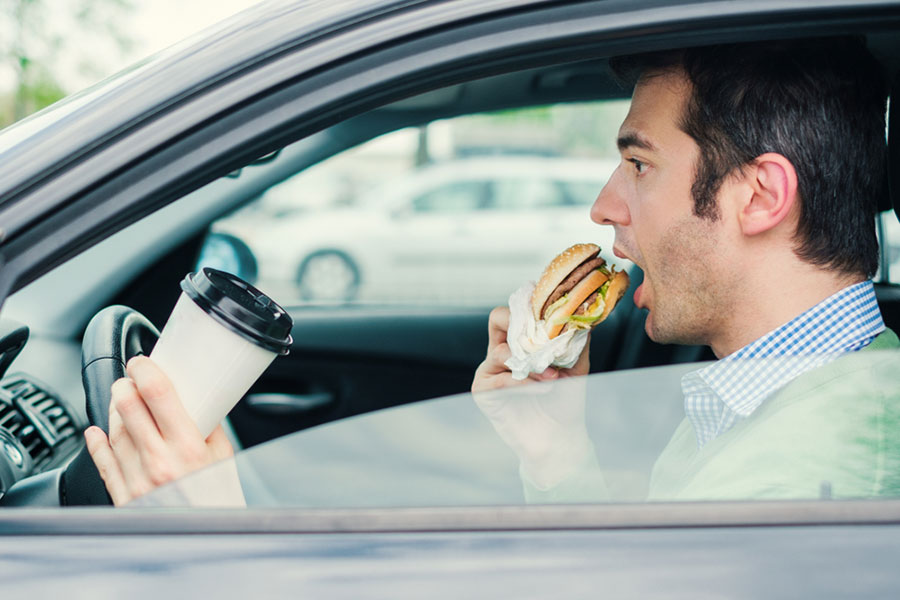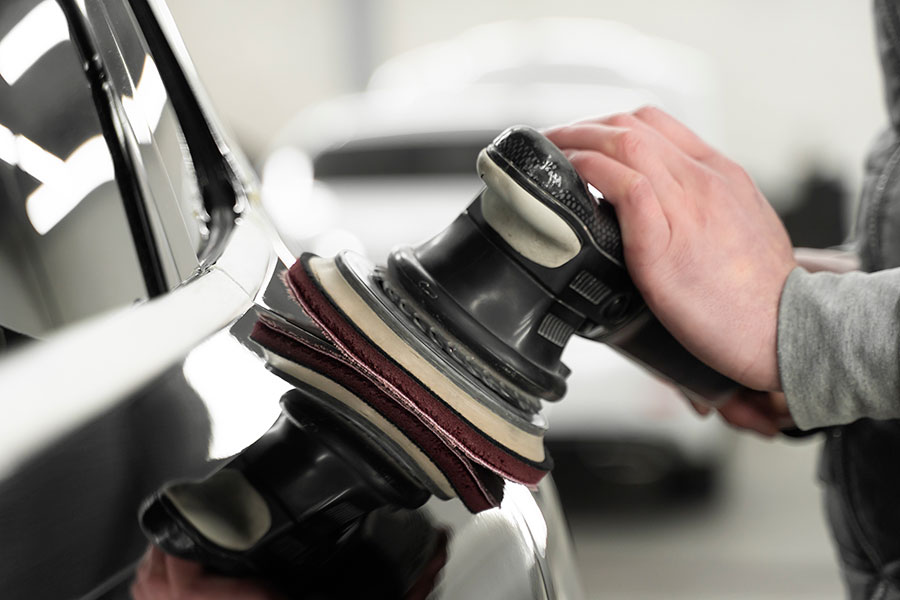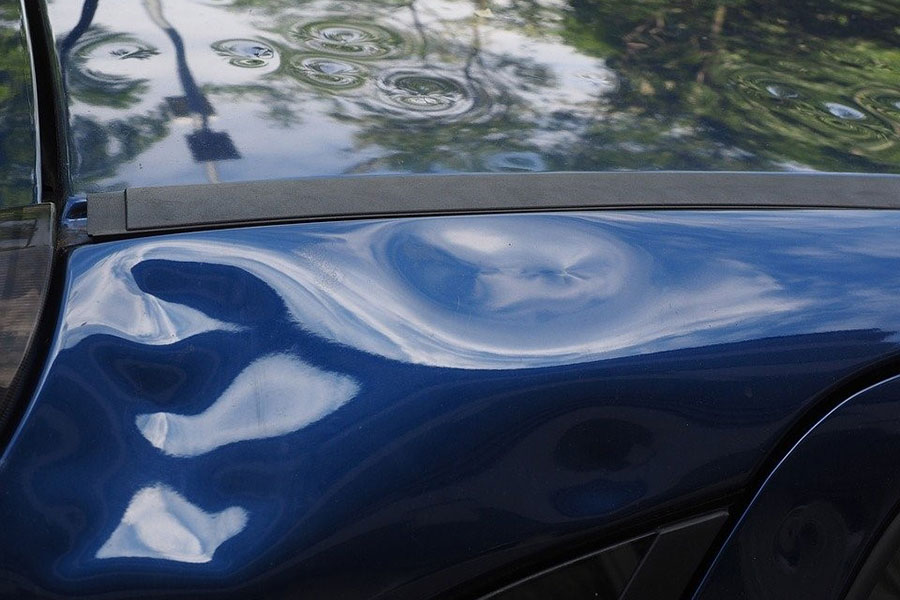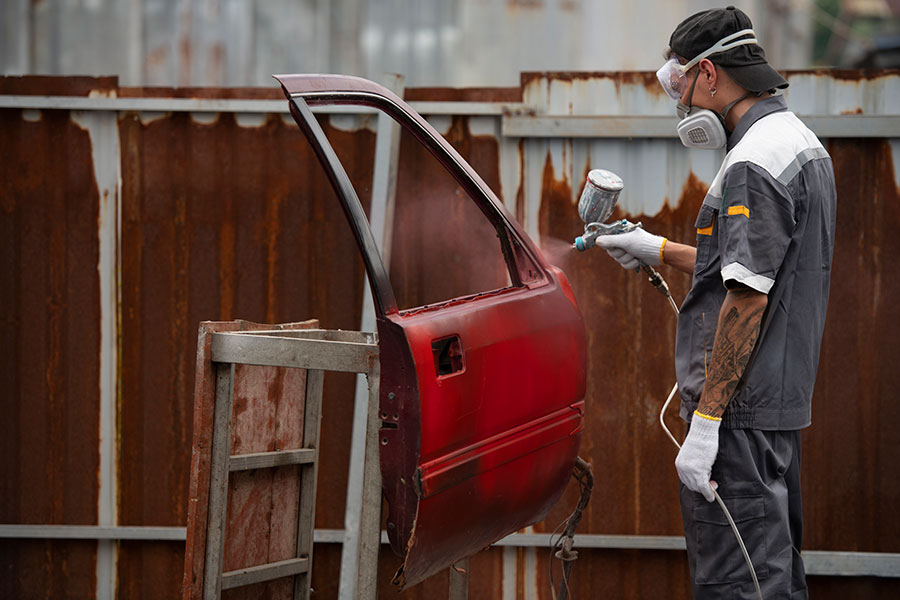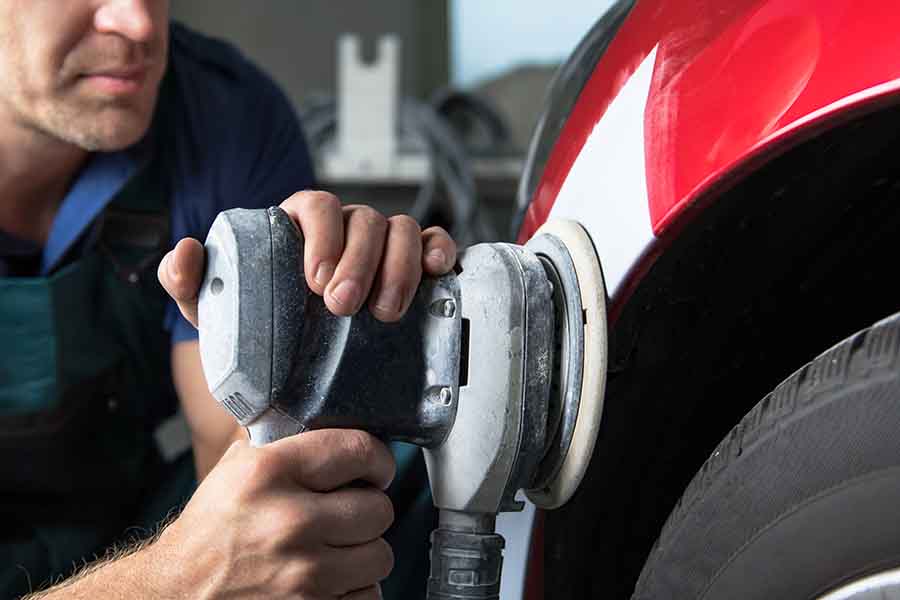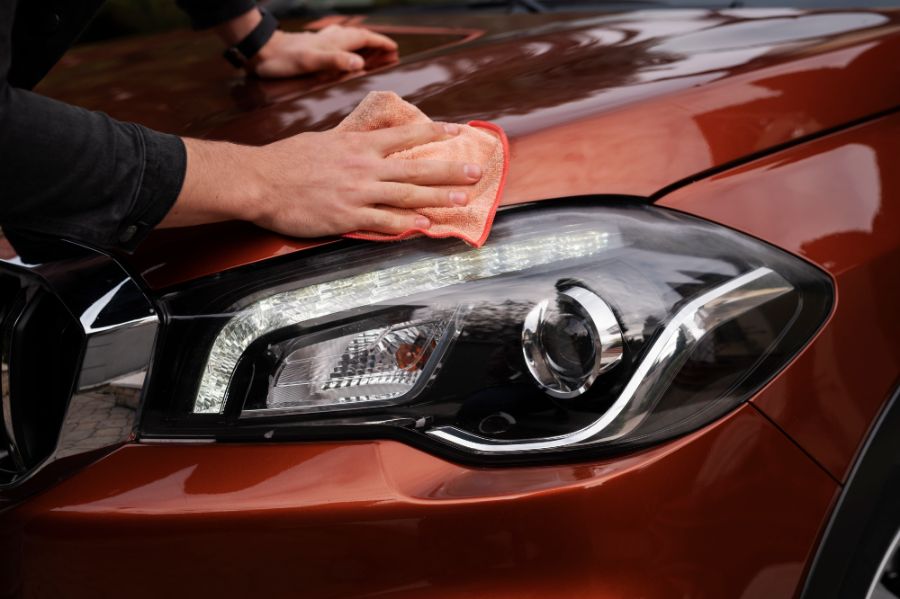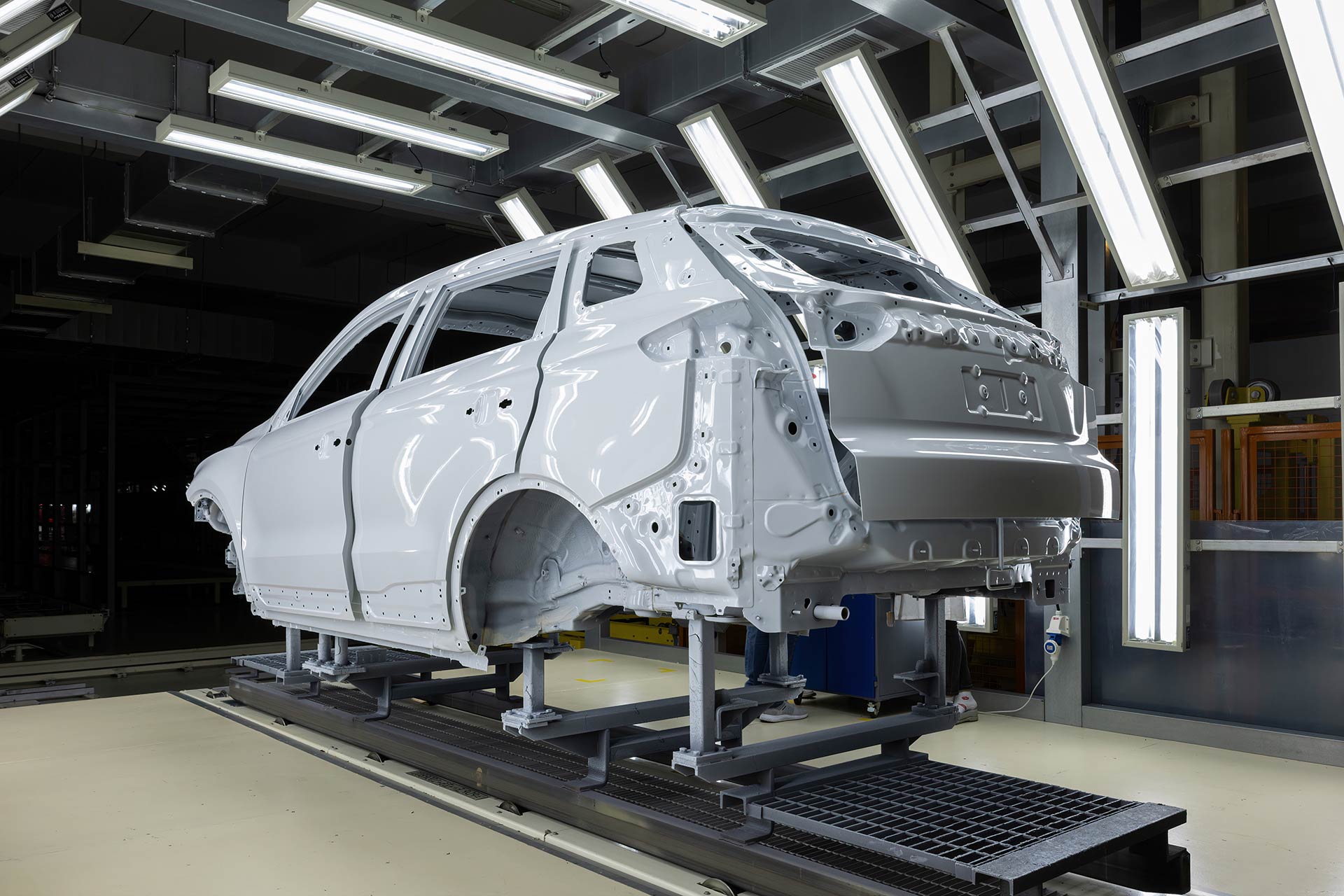Ever wondered how to shield your beloved vehicle from the fury of nature? Extreme weather conditions, be it blistering heat, bone-chilling cold, or torrential rains, can wreak havoc on your car. But fret not, safeguarding your ride from these harsh elements doesn't have to be a Herculean task. With smart strategies and proactive measures, you can ensure your car remains in tip-top shape, regardless of what Mother Nature throws at it. Whether it's choosing the right protective gear, understanding the importance of regular maintenance, or knowing when to seek shelter, we've got you covered. Dive into our guide on protecting your car in extreme weather and drive with confidence through any storm.
Understanding Weather Threats to Cars
Hail Damage
Hail can leave dents and break windows. It strikes without much warning, especially during severe storms. Protecting your car involves parking it under cover or using a car cover when hail is forecasted.
Cars parked outside face a high risk from hail. The impact can vary, from small dents to shattered windshields.
Flood Risks
Floods can ruin a car's engine and interior. They are common in areas prone to heavy rains or hurricanes. Moving your vehicle to higher ground is crucial when flood warnings are issued.
Water entering a car can lead to mold. It also damages the electrical system and engine. Recovery from flood damage is often costly and complicated.
Extreme Heat
Heat affects a car's battery and tires. It can cause overheating and increase tire blowout risks. Parking in the shade or using a windshield sun protector helps reduce these risks.
The cabin's temperature can soar, damaging the dashboard and seats. Regular maintenance is key during hot months.
Winter Chemicals
Salt and chemicals prevent road ice but corrode car exteriors. Washing your car frequently in winter minimizes this damage.
These substances speed up rusting. They affect the undercarriage, brakes, and wheel wells most.
UV Rays
UV rays fade paint and crack interiors over time. Using a UV protectant on the dashboard and seats preserves their appearance.
Sunlight weakens car paint, leading to dullness. Parking in shaded areas or using a car cover protects against UV damage.
Preparing Your Car for Extreme Conditions
Regular Checks
Regular maintenance checks are crucial for a car's performance in extreme weather. They ensure your vehicle is ready to face harsh conditions. Mechanics inspect the engine, battery, and fluids. They make sure everything works well. This prevents breakdowns during severe weather.
Having your car checked before winter or summer can save you from trouble. It's better to find and fix a problem in a garage than on a snowy road.
Weather Tires
Installing weather-appropriate tires improves traction and safety. In winter, snow tires grip icy roads better than all-season tires. They reduce the chance of sliding and accidents.
In hot climates, summer tires withstand high temperatures and perform better on dry roads. They ensure your car handles well in heat. Changing tires with the season is a wise move for safety.
Emergency Kit
Keeping an emergency kit in your car is essential. It should include blankets, water, a flashlight, and first aid supplies. These items can be lifesavers if you're stuck in bad weather.
The kit should also have tools for car repair and snacks. Being prepared helps you stay calm in emergencies. It can make waiting for help much safer and more comfortable.
Essential Weatherproofing Tips
Paint Protection
After preparing your car for extreme conditions, it's crucial to focus on weatherproofing measures. Applying a high-quality wax plays a pivotal role in this process. This layer acts as a shield, protecting the car's paint from harsh UV rays and relentless precipitation. Not only does it keep the car looking new, but it also prevents the paint from fading or peeling off.
A good wax can last several months, making it a cost-effective way to maintain your vehicle's appearance and integrity. Remember, reapplication is necessary after a few washes or exposure to severe weather conditions.
Rust Prevention
Rust and corrosion are cars' worst enemies, especially in areas with heavy snowfall or coastal regions where salt is in the air or used on roads. A rubberized undercoating is a strong defense against these elements. It seals the undercarriage of the vehicle, preventing moisture and salt from causing rust and corrosion.
This coating not only extends the lifespan of your car but also helps maintain its value. It's an investment that pays off by saving you from costly repairs down the line. Make sure to have this applied by professionals for comprehensive coverage and best results.
Interior Dryness
Keeping the interior of your car dry is just as important as protecting its exterior. Installing weatherstripping around doors and windows ensures no water seeps inside, safeguarding against water damage. This step is vital for preventing mold growth and maintaining a clean, healthy environment inside your vehicle.
Weather stripping also helps in keeping the interior temperature controlled, making your car more comfortable during extreme weather conditions. It's an affordable solution that significantly impacts your car's upkeep and comfort level.
Shelter Solutions for Your Vehicle
Garage Benefits
A garage offers complete protection for your vehicle. It shields against rain, snow, and the sun's harsh UV rays. Inside a garage, your car is safe from dents caused by hail or falling branches.
Garages also add a level of security. They keep your vehicle hidden from potential thieves and vandals. With a locked garage door, you have peace of mind knowing your car is secure.
Carport Advantages
Carports are a great alternative if you don't have a garage. They provide good protection from the sun and precipitation. A carport can also prevent frost build-up on your windshield in the winter.
Carports are less expensive than building a garage. They are easier to install too. This makes them a popular choice for many homeowners.
Car Cover Protection
Using a car cover is the simplest way to protect your vehicle. It's especially useful if you lack a garage or carport. Car covers guard against dust, rain, and sunlight.
When choosing a car cover, consider the material. For sunny climates, go for covers with UV protection. In wet areas, choose waterproof materials. Breathable fabrics are best for preventing moisture build-up underneath the cover.
Portable Garage Perks
Portable garages are an excellent solution for those without permanent garage space. They offer similar benefits to traditional garages but at a fraction of the cost.
Portable garages can be set up anywhere on your property. They're easy to assemble and take down as needed. This flexibility is perfect for renters or people who move frequently.
Portable garages provide sturdy protection against weather conditions. They're made with heavy-duty materials designed to withstand wind, rain, and snow.
Seasonal Protection Strategies
Summer Care
Protecting your car in the summer involves more than just keeping it cool. Using sunshades can significantly reduce the temperature inside your vehicle. They block the sun's rays, preventing damage to the dashboard and seats. It's a simple step that makes a big difference.
Parking in the shade is another effective strategy. It not only keeps the car cooler but also protects the paint from fading. When shade is not available, try to park your car so that the sun hits the rear, minimizing dashboard exposure.
Winter Protection
Winter demands extra care for your vehicle. Antifreeze is crucial. It prevents the engine's cooling system from freezing, which can cause significant damage. Always check antifreeze levels before winter hits.
Keeping the gas tank full is another key tip. A full tank can prevent water from freezing inside your fuel pump, ensuring your car starts smoothly on cold mornings. It adds extra weight to the vehicle, improving traction on slippery roads.
Fluids and Filters
Changing fluids and filters is essential for maintaining vehicle performance, especially in extreme temperatures. Oil becomes thicker in cold weather, making it harder for your engine to run efficiently. Switching to a winter-grade oil can help.
Air filters also need attention. A clogged filter restricts airflow to the engine, reducing its efficiency and performance. Replacing it regularly ensures your car runs smoothly, regardless of the season.
Pre-Storm Safety Measures
Weather Forecasts
Monitoring weather forecasts is crucial for protecting your car in extreme conditions. With today's technology, staying updated is easier than ever. Apps and news channels provide real-time information. This allows car owners to prepare well before a storm hits.
It's wise to check these forecasts regularly. Especially during seasons known for severe weather. Being informed helps you take proactive steps to safeguard your vehicle.
Secure Loose Items
Before a storm arrives, securing loose items around your vehicle is vital. Items like garden tools or outdoor furniture can become dangerous projectiles during high winds. They can cause significant damage to cars and property.
Take the time to store these items safely indoors or secure them firmly. This simple step can prevent costly repairs to your car after the storm passes.
Higher Ground
If flooding is a concern, moving your vehicle to higher ground is a smart move. Floodwaters can rise quickly, causing irreparable damage to vehicles caught in their path. By relocating your car to an elevated area, you significantly reduce the risk of flood damage.
This precaution is especially important in areas prone to sudden heavy rains or where water drainage is poor.
Post-Storm Care for Your Car
Vehicle Inspection
After the storm passes, it's crucial to inspect your car for any signs of damage. Look for dents, scratches, or broken parts that the storm may have caused. Check under the car for leaks or any objects that might have become lodged underneath.
Open the hood and inspect for debris that could interfere with your car's operation. Pay special attention to the battery and wiring. Storms can cause electrical issues that are not immediately apparent.
Cleaning Up
A thorough cleaning is next on your list. Remove any leaves, mud, or debris stuck to your car. These materials can hold moisture against the metal and lead to rust.
Use a gentle soap and water mixture to wash your car. Make sure to clean the undercarriage too, as it's likely to collect debris during a storm. This step not only helps in preventing rust but also gives you a chance to spot any damage you might have missed during your initial inspection.
Professional Checkup
If your vehicle was exposed to floodwaters, consulting a professional mechanic is essential. Floodwater can cause significant damage to a vehicle's engine, transmission, and electrical system.
A mechanic can perform a comprehensive checkup to ensure all systems are functioning correctly. They can also check for any hidden damage that water exposure may have caused. This step is crucial for maintaining your vehicle's safety and longevity.
Reviewing Insurance for Weather Damage
Comprehensive Coverage
Comprehensive insurance covers damage from natural events. This includes storms, hail, and floods. It's crucial for car owners in areas prone to extreme weather.
They should understand what their policy covers. Not all policies are the same. Some might not cover certain types of weather damage. It's wise to review your policy annually. This ensures it meets your needs.
Collision Coverage
Collision insurance, on the other hand, deals with accidents. This includes hitting another vehicle or an object like a tree. However, it does not cover weather-related damages.
This distinction is vital. Owners need to know the difference. They should ensure they have both types of coverage if needed. Especially if living in an area with a high risk of natural disasters.
Updating Policies
It's essential to update insurance policies regularly. This ensures coverage for all possible scenarios. Natural disasters can cause significant damage to vehicles.
After storms, as discussed in "Post-Storm Care for Your Car", assessing and documenting damage is crucial. Then, check if your current policy covers this damage. If not, consider updating your policy.
Insurance companies often adjust their offerings. Staying informed helps maintain adequate coverage. Don't wait for a disaster to find out you're underinsured.
Documenting Vehicle Condition
Keeping records of your vehicle's condition is important. Document its state before any damage occurs. Take photos and keep receipts of maintenance and repairs.
These records support insurance claims after weather damage. They prove the pre-existing condition of the car. This documentation can make the claim process smoother and faster.
Insurers value detailed records. They provide clear evidence of the vehicle's value and condition pre-disaster. This can lead to more accurate settlements.
Final Remarks
Protecting your car from extreme weather starts with understanding the threats and taking the right steps to prepare. You've learned about weatherproofing, finding shelter, seasonal strategies, and how to handle the aftermath of a storm. It's all about being proactive. Your vehicle is a big investment, so ensuring it's safeguarded against nature's fury is crucial. Reviewing your insurance to cover weather damage is also smart. This way, you're not just hoping for the best; you're planning for it.
Now it's on you. Take these tips, put them into action, and keep your car safe no matter what the sky throws down. Weather can be unpredictable, but your car's protection doesn't have to be. Start today—your vehicle will thank you tomorrow. And remember, staying informed and prepared is your best defense against extreme weather damage.
Frequently Asked Questions
How can I protect my car from extreme weather conditions?
Start by understanding the specific threats that different weather conditions pose to your vehicle. Prepare your car by ensuring it's in good condition and consider weatherproofing treatments. Utilize shelter solutions like garages or car covers for protection.
What are some essential weatherproofing tips for cars?
Apply a high-quality wax to protect the paint, ensure seals around doors and windows are intact, and use rubber protectant on door seals and wipers. Regular maintenance checks are also crucial for weatherproofing.
How can I find shelter solutions for my car during bad weather?
If you don't have access to a garage, consider investing in a sturdy car cover designed for your vehicle type. Look into portable car shelters or seek covered parking areas in your vicinity as alternative solutions.
What should I do to protect my car before a storm hits?
Secure loose items around your vehicle, park in a safe location away from trees or poles, and ensure your car is covered or in a garage. Check that your insurance is up to date and covers storm damage.
How do I care for my car after it has been exposed to extreme weather?
Inspect your vehicle for any damage, clean debris from the interior and exterior, and check for water intrusion. If you suspect serious damage, consult a professional mechanic immediately.
Why is reviewing insurance important for weather-related car damage?
Reviewing your insurance policy ensures you have comprehensive coverage for weather-related damages. It helps you understand what damages are covered, the process for filing a claim, and any deductibles that may apply, offering peace of mind during extreme weather events.





